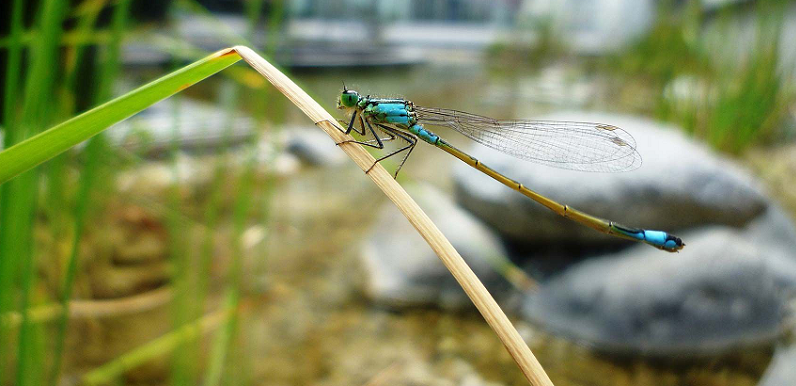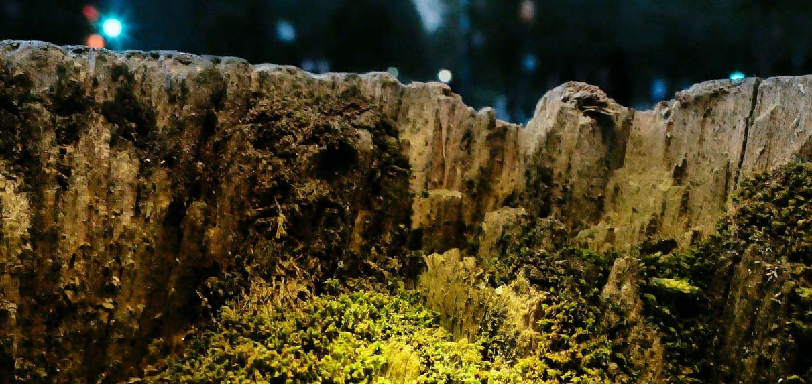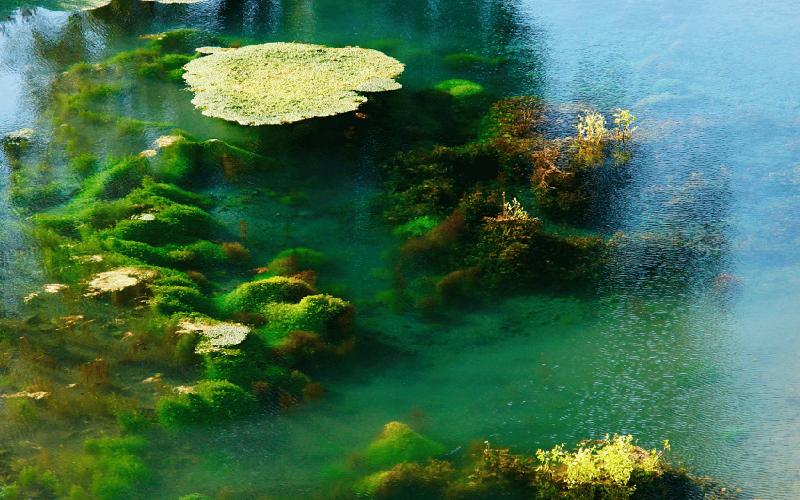When we think of biodiversity, our minds often wander to vast forests, sprawling savannas, or deep oceans. Yet, some of the most crucial biodiversity hotspots are those we rarely see or think about: microhabitats. These small-scale environments, often hidden in plain sight, are bustling hubs of life, hosting a wide array of organisms that play significant roles in the health and stability of ecosystems.
Microhabitats, from the intricate layers of soil underfoot to the dewdrops on leaves, are not just minute spaces; they are complex worlds teeming with life, each with its unique environmental conditions and inhabitants. Their significance extends far beyond their physical size, influencing everything from nutrient cycling to the stability of larger ecosystems.
The Diversity of Microhabitats
Microhabitats are much more varied than many might initially believe. These small-scale environments, often unnoticed in our daily lives, are unique worlds in their own right. Each type of microhabitat presents a distinct set of characteristics and conditions that support a wide array of life forms.
Types of Microhabitats
Microhabitats come in various forms, each offering a unique niche for different organisms. Understanding these types can give us a clearer picture of the complexity and diversity found within these tiny ecosystems.
Soil Layers
The soil beneath our feet is not just a homogeneous mix of organic matter; it’s a stratified microhabitat teeming with life. Different layers of soil offer varying conditions – from moisture levels to nutrient availability – each supporting distinct communities of organisms. Microorganisms like bacteria and fungi thrive here, along with small invertebrates like earthworms and beetles, playing vital roles in decomposition and nutrient cycling.
Plant Surfaces
The surfaces of plants are not merely passive structures; they are dynamic microhabitats that support a variety of life forms. Leaves, stems, and roots each create unique environments. Epiphytes, for instance, grow on the surfaces of other plants, while various insects and small arthropods make their homes among the leaves and bark. These microhabitats are crucial for pollinators, seed dispersers, and even predatory insects that control pest populations.
Water Bodies (e.g., Puddles, Dewdrops)
Small bodies of water, like puddles, dewdrops, and the thin film of water on leaves, constitute another important category of microhabitats. They provide a vital resource for many small creatures, including insects and amphibians. The micro-ecosystems within these water bodies are also fascinating, often containing microorganisms like protozoa and algae, which form the base of a unique aquatic food web [1].
Characteristics of Each Microhabitat
Each microhabitat, while small in scale, has distinct characteristics that define the life forms it can support. These characteristics are not just about the physical space but also include the microclimate, available nutrients, and interactions with surrounding ecosystems.
Environmental Conditions
The environmental conditions in microhabitats, such as temperature, humidity, light, and pH, can vary dramatically even over small distances. This variation allows for a high degree of specialization among the organisms that inhabit these spaces. For instance, certain fungi and bacteria are adapted to the acidic environment of some soil layers, while others thrive in the alkaline conditions found in different areas.
Flora and Fauna Unique to Each
The unique conditions of each microhabitat give rise to specialized flora and fauna. Soil layers, for example, are home to organisms that are adept at breaking down organic matter, while plant surfaces host species that can adhere to and derive nutrients from these surfaces.
In water bodies, we find a range of aquatic organisms adapted to living in confined, often temporary, watery environments. These adaptations not only highlight the resilience and diversity of life in microhabitats but also underscore their role in the broader ecological tapestry [2].

The Ecological Significance of Microhabitats
The importance of microhabitats extends far beyond their diminutive size. These small-scale environments play a pivotal role in the broader ecological landscape. By supporting diverse life forms and contributing to vital ecological processes, microhabitats are essential components of the planet’s overall biodiversity and health. In this section, we delve into the ecological significance of microhabitats and how they contribute to the functioning of larger ecosystems.
Support for Diverse Life Forms
Microhabitats are not just physical spaces; they are the cradles of biodiversity, nurturing a wide range of life forms. Each microhabitat, with its unique characteristics, provides a home for various organisms, some of which are entirely dependent on these specific conditions for survival.
Microorganisms
Microorganisms, including bacteria, fungi, and protozoa, are the backbone of many microhabitats. These tiny organisms play crucial roles in nutrient cycling, decomposition, and soil formation. They are the unseen workers that keep these miniature ecosystems thriving and, in turn, influence the health of larger ecosystems.
Insects
Insects find refuge and resources in various microhabitats. From the underside of leaves to the crevices in bark and soil layers, these environments are vital for their survival. They serve as pollinators, decomposers, and food sources for other animals, linking microhabitats to the broader ecological web.
Small Mammals and Amphibians
Some small mammals and amphibians are also closely tied to specific microhabitats. For instance, amphibians often rely on small, temporary water bodies for breeding, while certain small mammals utilize soil burrows or the undergrowth for shelter and foraging. These species contribute to the ecological dynamics by their roles as predators, prey, and seed dispersers [3].
Contribution to Larger Ecosystems
The influence of microhabitats stretches beyond their physical boundaries. They contribute significantly to the ecological processes that sustain larger ecosystems, showcasing the interconnectedness of the natural world.
Nutrient Cycling
Nutrient cycling is a fundamental ecological process, and microhabitats are key players in this cycle. The decomposition of organic matter in soil layers, facilitated by microorganisms and insects, releases nutrients back into the ecosystem, supporting plant growth and overall ecosystem health.
Food Web Connections
Microhabitats are integral to food webs. The organisms that inhabit these spaces often serve as food sources for larger species, creating a link between small-scale and larger-scale ecological interactions. This connection highlights the importance of microhabitats in maintaining the balance and diversity of life across various ecosystems.

Threats to Microhabitats
While microhabitats are vital for biodiversity and ecosystem health, they are increasingly under threat. Various factors, both human-induced and natural, pose significant risks to these miniature ecosystems. Understanding these threats is crucial for developing effective conservation strategies. In this section, we will explore the main challenges that microhabitats face in today’s changing world.
Human-Induced Changes
Human activities have a profound impact on the natural environment, and microhabitats are no exception. The expansion of urban areas, industrial activities, and various forms of pollution have all contributed to the degradation of these critical ecosystems.
Urban Development
Urban development leads to habitat loss and fragmentation, severely impacting microhabitats. The construction of buildings, roads, and other infrastructure often results in the destruction of these small-scale ecosystems, reducing the available space for the organisms that depend on them [4].
Pollution
Pollution, in its many forms, poses a significant threat to microhabitats. Chemical pollutants from agricultural runoff, industrial waste, and urban activities can contaminate soil and water, affecting the delicate balance of these ecosystems. Air pollution also impacts plant surfaces, altering the conditions of these microhabitats and, in turn, affecting the organisms that rely on them.
Natural Threats
In addition to human-induced changes, natural factors also threaten microhabitats. These threats can be exacerbated by human activities, leading to more severe impacts.
Climate Change
Climate change is altering the conditions of many microhabitats. Changes in temperature, precipitation patterns, and extreme weather events can disrupt the delicate balance of these ecosystems. This can lead to shifts in species distribution and the loss of certain microhabitats, affecting the overall biodiversity and ecological processes.
Habitat Destruction
Natural phenomena such as wildfires, floods, and storms can also lead to the destruction of microhabitats. While these events are part of natural ecological cycles, their increased frequency and intensity due to climate change can have devastating effects on these small-scale ecosystems.
References
[1] The Importance of Microhabitat for Biodiversity Sampling
[2] Climate Extremes, Rewilding, and the Role of Microhabitats
[3] Microhabitats, the building blocks of biodiverse ecosystems
[4] Habitats and Microhabitats

